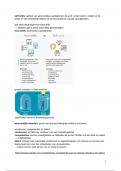Recommended reading list ✔️✔️Landscape Architectural Graphic Standards, Landscape Architecture
Documentation Standards, Sustainable Sites Handbook, Site Planning + Design Handbook
What is the primary role of a landscape architect in urban planning?
The primary role of a landscape architect in urban planning is to design outdoor spaces that enhance
livability, sustainability, and aesthetics while considering environmental, social, and cultural factors.
✔️✔️
How does a landscape architect assess the environmental impact of a project?
A landscape architect assesses the environmental impact by evaluating factors such as soil quality, water
management, wildlife habitats, plant species, and overall sustainability of the project’s design and
materials. ✔️✔️
What is the purpose of a design brief in landscape architecture?
A design brief outlines the goals, objectives, and constraints of a project. It serves as a guideline to
ensure the design meets the client’s needs, the community’s requirements, and site-specific challenges.
✔️✔️
Explain the concept of landscape connectivity in urban environments.
Landscape connectivity refers to creating continuous, accessible green spaces and ecological corridors
that allow for the movement of wildlife and people within urban areas, promoting both biodiversity and
human well-being. ✔️✔️
What are the key benefits of using drought-tolerant plants in landscape design?
Drought-tolerant plants conserve water, reduce maintenance costs, and increase sustainability by
requiring less irrigation. They are ideal for regions with water scarcity or in areas where sustainable
practices are a priority. ✔️✔️
What is the role of a landscape architect in the preservation of historic landscapes?
,A landscape architect plays a key role in preserving historic landscapes by evaluating, restoring, and
conserving the historical integrity of spaces while integrating modern design elements in a respectful
and contextually appropriate manner. ✔️✔️
How do landscape architects contribute to urban heat island mitigation?
Landscape architects reduce the urban heat island effect by incorporating shade-providing trees, green
roofs, and reflective materials, which help lower temperatures in densely built areas and improve air
quality. ✔️✔️
Why is site circulation an important consideration in landscape architecture?
Site circulation ensures that paths, roads, and pedestrian routes are designed for optimal flow, safety,
and accessibility. It guides how people move through the space, making the landscape functional and
user-friendly. ✔️✔️
How do landscape architects address the challenges of water conservation in arid regions?
In arid regions, landscape architects use strategies such as xeriscaping, which involves selecting drought-
resistant plants, implementing efficient irrigation systems, and utilizing mulch to minimize water use.
✔️✔️
What is the difference between hardscape and softscape, and why is it important in design?
Hardscape refers to inanimate elements like paving, walls, and fences, while softscape includes living
components such as plants and trees. Both are vital for creating a balanced, functional, and aesthetically
pleasing environment. ✔️✔️
What is the purpose of integrating water management systems in landscape architecture?
Water management systems help control stormwater runoff, reduce flooding, improve water quality,
and conserve water. Landscape architects design systems like rain gardens, bioswales, and permeable
pavements to manage water sustainably. ✔️✔️
How does the choice of paving materials affect a landscape’s sustainability?
The choice of paving materials impacts a landscape’s sustainability by influencing runoff, water
absorption, heat retention, and the overall environmental footprint. Permeable materials allow for
water infiltration and reduce the need for drainage systems. ✔️✔️
,What is the role of natural light in landscape design?
Natural light enhances the aesthetic and functional qualities of outdoor spaces. It improves visibility,
promotes health and well-being, and can be used to highlight key features of the landscape. ✔️✔️
How can landscape architects contribute to improving mental health through design?
Landscape architects contribute by creating spaces that reduce stress, encourage relaxation, and
promote social interaction. Design elements like green spaces, water features, and secluded areas
support mental well-being. ✔️✔️
What is the concept of "low-impact development" in landscape architecture?
Low-impact development focuses on designing landscapes that manage stormwater efficiently, reduce
environmental degradation, and maintain ecological integrity. Techniques include permeable surfaces,
green roofs, and rainwater harvesting. ✔️✔️
Why is it important to consider the seasonal variation in plant selection for landscape projects?
Seasonal variation affects how plants will look and function throughout the year. Landscape architects
select plants that provide year-round interest and ensure the landscape remains functional and visually
appealing across seasons. ✔️✔️
What is the purpose of using contour mapping in landscape design?
Contour mapping helps landscape architects understand the slope and elevation of the land. This is
crucial for proper drainage, grading, and creating designs that are responsive to the natural topography
of the site. ✔️✔️
How can landscape architecture promote environmental justice?
Landscape architecture can promote environmental justice by creating equitable access to green spaces,
addressing the needs of underserved communities, and designing spaces that improve environmental
and social conditions for all. ✔️✔️
What is the role of landscape architecture in enhancing public health?
, Landscape architecture enhances public health by designing spaces that encourage physical activity,
provide opportunities for social interaction, and improve environmental conditions such as air quality
and noise reduction. ✔️✔️
What is a “view shed,” and how does it impact landscape design?
A view shed is the area from which a specific location is visible. It influences landscape design by
determining sightlines and ensuring that key views are preserved or enhanced while avoiding visual
obstructions. ✔️✔️
How does community engagement influence the outcome of landscape architecture projects?
Community engagement ensures that the design reflects the needs, desires, and values of the people
who will use the space. It helps create designs that are more relevant, functional, and accepted by the
community. ✔️✔️
test content ✔️✔️28% schematic design, 33% master planning, 22% design development, 17%
stewardship & design principles
core assumptions ✔️✔️1. LA --> forms of human dev. respectful of env/cultural resources w/
sustainable design + smart growth
2. health, safety, welfare = #1
3. LOVE mixed-use dev, urban in-fill, brownfield dev
4. emphasis on multimodal circulation, parking, crosswalks
5. protect hydrological resources (esp. wetlands, floodplains)
6. public input = vital component of design process
goals of sustainable site design ✔️✔️MAIN GOAL: ALWAYS find a way to balance soc/cultural, env, &
econ considerations
SOCIAL/CULTURAL (> sense of community, protect cultural + historic resources, < crime, > public safety,
equitable public service, > access outdoor recreation, min neg impact to adjacent property)











